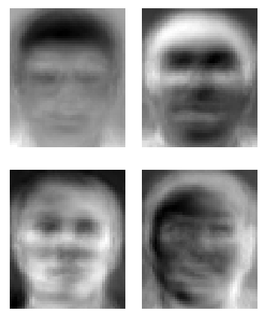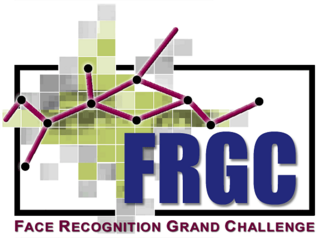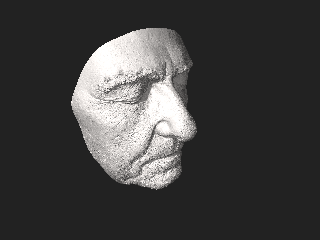 W
WA facial recognition system is a technology capable of matching a human face from a digital image or a video frame against a database of faces, typically employed to authenticate users through ID verification services, works by pinpointing and measuring facial features from a given image.
 W
WAn eigenface is the name given to a set of eigenvectors when used in the computer vision problem of human face recognition. The approach of using eigenfaces for recognition was developed by Sirovich and Kirby and used by Matthew Turk and Alex Pentland in face classification. The eigenvectors are derived from the covariance matrix of the probability distribution over the high-dimensional vector space of face images. The eigenfaces themselves form a basis set of all images used to construct the covariance matrix. This produces dimension reduction by allowing the smaller set of basis images to represent the original training images. Classification can be achieved by comparing how faces are represented by the basis set.
 W
WFace detection is a computer technology being used in a variety of applications that identifies human faces in digital images. Face detection also refers to the psychological process by which humans locate and attend to faces in a visual scene.
 W
WThe Face Recognition Grand Challenge (FRGC) was conducted in an effort to promote and advance face recognition technology. It was the successor of the Face Recognition Vendor Test.
 W
WThe Face Recognition Vendor Test (FRVT) was a series of large scale independent evaluations for face recognition systems realized by the National Institute of Standards and Technology in 2000, 2002, 2006, 2010, 2013 and 2017. Previous evaluations in the series were the Face Recognition Technology (FERET) evaluations in 1994, 1995 and 1996. The project is now in an Ongoing status with periodic reports, and continues to grow in scope. It now includes tests for Face-in-Video-Evaluation (FIVE), facial morphing detection, and testing for demographic effects.
 W
WThe Glasgow Face Matching Test (GFMT) was created by researchers at the University of Glasgow and at Glasgow Caledonian University. It is a cognitive test designed to determine a person's ability to match different images of unfamiliar faces, and is designed for use in academic research and in applied security settings, where reliable human performance on this task is a common requirement of identity management systems.
 W
WMultiple Biometric Grand Challenge (MBGC) is a biometric project. Its primary goal is to improve performance of face and iris recognition technology on both still and video imagery with a series of challenge problems and evaluation.
 W
WLawrence Sirovich is mathematical scientist whose research includes, among other topics, applied mathematics, neuroscience and physics. He is recognized as the pioneer behind modern face recognition, and is known for eigenfaces, the method of snapshots, low dimensional dynamical systems, analysis of the US Supreme Court, neuronal population dynamics, and the faithful copy neuron.
 W
WThree-dimensional face recognition is a modality of facial recognition methods in which the three-dimensional geometry of the human face is used. It has been shown that 3D face recognition methods can achieve significantly higher accuracy than their 2D counterparts, rivaling fingerprint recognition.